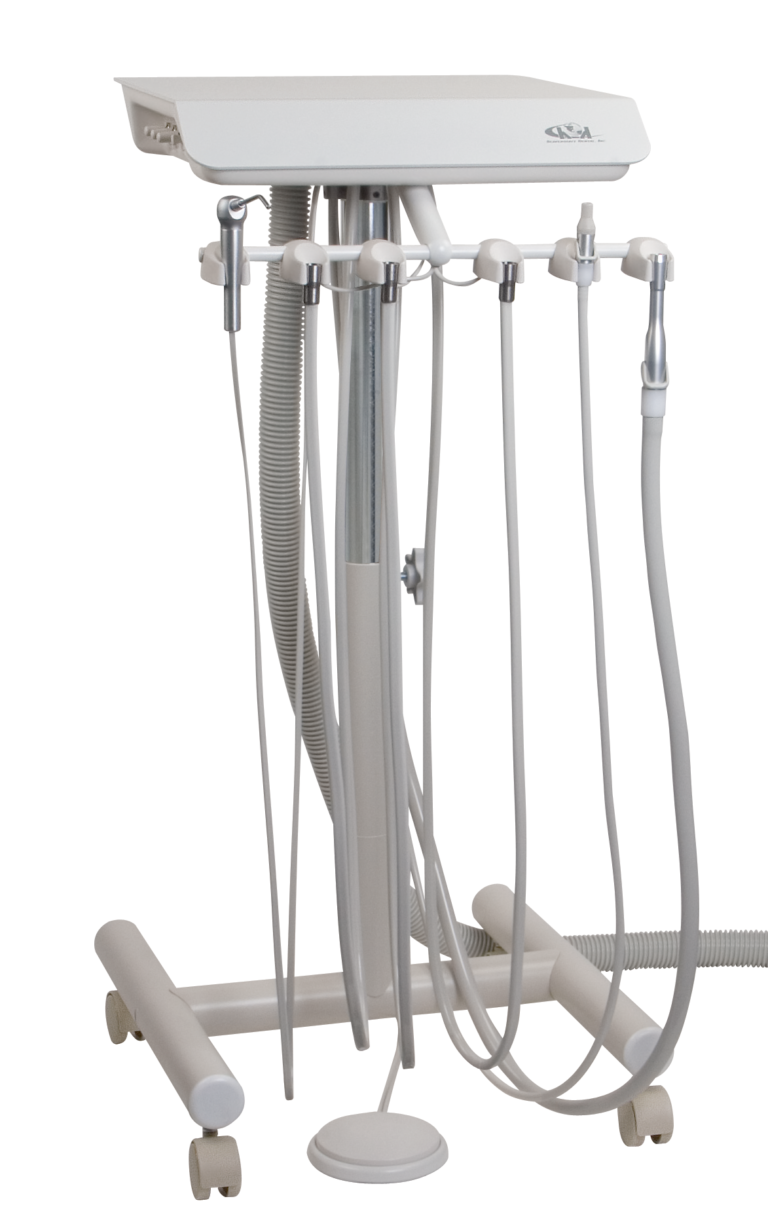Get to know the ABC's of vacuum canisters when deciding on what your evacuation system needs. The humble chairside trap, also known as the vacuum collection canister, is the first line of defense for your central vacuum. The collection canister does more than simply trap large debris that you pick up in your HVE valves.
What Do They Do?
While trapping debris that clogs or harms your central vacuum is an important function, the collection canister also allows you to have multiple vacuum valves in the room.
The canister has a single connection to the central vacuum providing vacuum into your operatory. It has three outlets to connect to your vacuum valves. Its standard configuration of two ports for the high volume evacuator valves (HVEs) and one 7/32" port for the saliva ejector (SE). These sizes are standardized in the US, as are the hoses which attach to them, so you have universal compatibility.
The ABC' s of Vacuum Canisters :
Above is the bottom view of the type "A" canister with the ports called out. As you can see, the HVE and SE ports are all in a line across the diameter of the canister. The drain port is larger (5/8") on this canister and offset to one side. It also uses a metal bracket and incorporates brass inserts, which accept the mounting screws that hold the bracket. There are 4 holes, so you can mount the bracket to either side as you prefer.
The type "C" canister has the same size ports as the "A" canister, but the drain line comes out the side of the canister rather than the bottom. The ports are in the same configuration (the HVE and SE ports are all inline along the diameter). It also uses the same basket as the type "A" canister. The side drain allows the "C" canister to be used in locations where you need the drain to come off at a 90 degree angle, such as inside a cart or at the end of an assistant's arm.

NOTE : The drain needs to go down the umbilical, which comes out the back of this cart top. The "C" canister goes inside.
Type "B" canisters (#30-59, #30-61, #30-63) are slightly smaller in diameter than the "A" and "C" canisters. Its ports and drain are all off-center. As you can see below, the drain port is the same size as the HVE ports (1/2"). This is one of the distinguishing features of the type "B" canister. It has a smaller drain than the "A" and "C" canisters.
The "B" canister also has a unique clip-on connector to attach to the brackets. These allow use of the canister in tight spaces.
Drain Sizes
As far as drain sizes go, the "B" canister has a 1/2" drain and the "A" and "C" canisters have a 5/8" drain. With a 5/8" drain size, one might expect the type "A" or "C" styles to allow better flow than the type "B," but ultimately the vacuum is dependent on the HVE and SE valves (which restrict to less either way). These restrict vacuum more than either drain line will. Regardless of the canister used, the suction you get out of the valve should be the same.
Whether you're replacing an existing canister or adding a new one, you should now know the ABC's of collection canisters, so you're able to find what you need!




LEAVE A REPLY